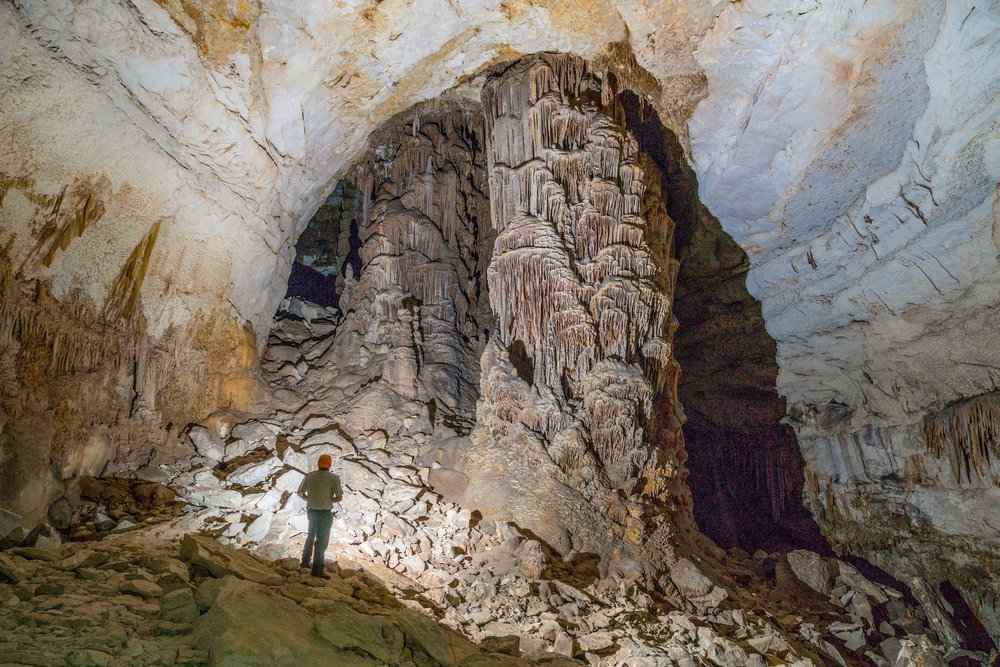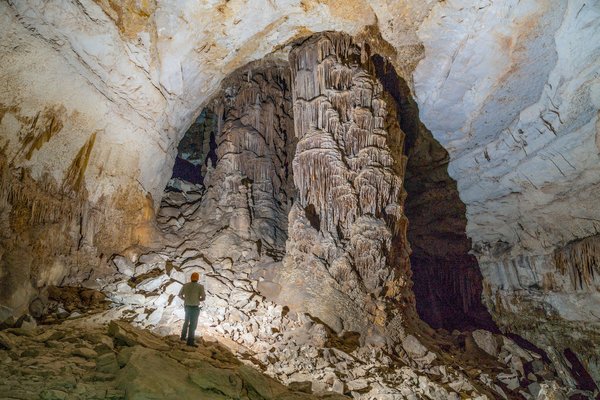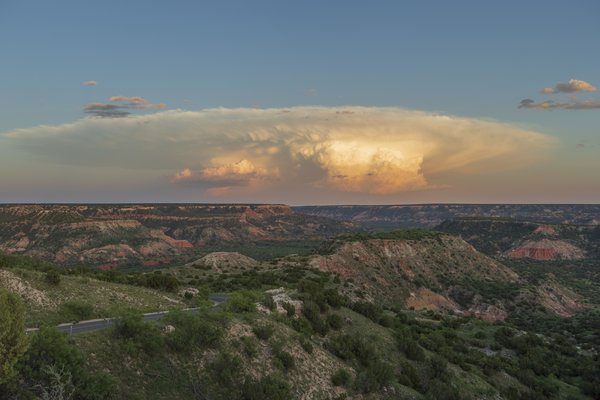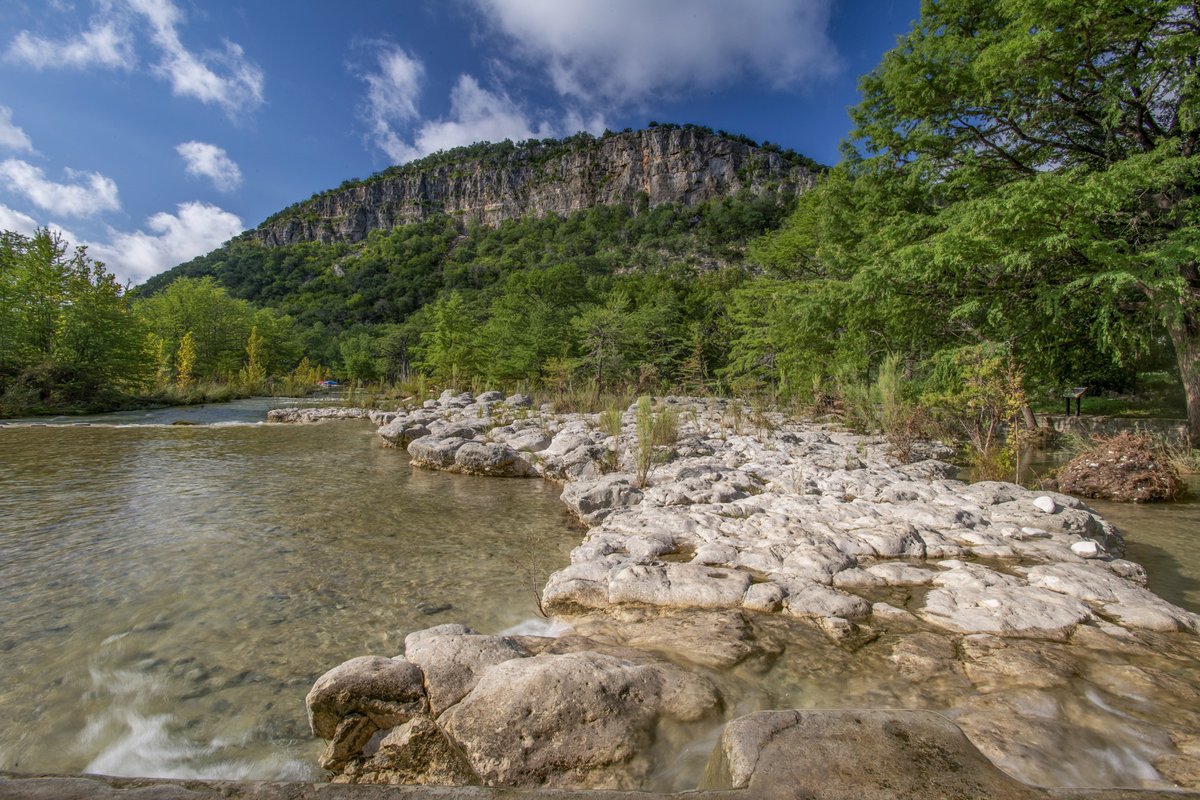The 20 known caves at Kickapoo Cavern State Park were forged through chemical and physical erosion as acidic groundwater carved through 105-million-year-old limestone.
Eventually, the water table dropped, and the passageways slowly drained out. The loss of the water’s buoyant support sparked a massive collapse in Kickapoo Cavern. What is now the cave floor was once its ceiling.
Water has played a fundamental role in shaping the cavern’s many formations.
“It’s groundwater eventually making its way through the limestone rock and just slowly dripping,” administrative assistant and cavern tour guide Ashley Patino-Jones says. “Then those minerals start to build up and create the stalactites and stalagmites, and then those stalactites and stalagmites end up making columns.”
Kickapoo Cavern is famous for its two largest columns, places where the ceiling-hanging stalactites and floor-sprouting stalagmites grow to meet one another.
These towering columns are halfway through the 1,400-foot-long cavern and can be visited only on a guided tour. At 80 feet high and 30 feet across, they look like cascading icicles stretching from ceiling to floor.
Cavern tours are available weekly on Saturdays at 1 p.m. (reserve a spot on the park website). The trail is a moderately strenuous three-quarter-mile hike with multiple 150-foot elevation changes over loose rocky terrain.
“Wear something comfortable that you don’t mind getting dirty and sweaty in,” Patino-Jones says. “It’s a natural cavern, so there’s no lights
and walkways.”
Visitors should bring close-toed walking shoes and two flashlights each. Helmets are provided by park staff.
Near the end of the tour, lovers of peace and quiet will have a chance to bask in the remarkable silence and darkness of being underground, as everyone is instructed to turn off their flashlights.
“My favorite part is just seeing how quiet everyone can be,” Patino-Jones says. “It’ll be like that for a few minutes. We’ll tell people ‘Y’all can turn your lights back on’ and nobody wants to turn their lights back on. They still want to sit there in the dark and the quiet just to enjoy it, because you don’t get it very often.”
Despite its proximity to Stuart Bat Cave, which is known for its seasonal colony of Mexican free-tailed bats, Kickapoo Cavern does not have a
bat population.
“The Mexican free-tailed bat doesn’t just choose any cavern,” Patino-Jones says. “They’ll specifically choose a cavern based off of the entrance, because they need speed and momentum to leave the cavern.”
Instead of bats, Kickapoo Cavern is home to Texas cave scorpions, cave crickets, chirping frogs, barking frogs and cellar spiders, or daddy longlegs.
After the cavern tour and the chance to marvel at the speleothem the size of an eight-story building, visitors can explore the park’s more than 14 miles of trails, visit the bird blind for hard-to-find species, or set up for the night at one of 15 campsites.








